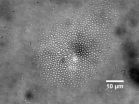(Press-News.org) The research carried out at IIASA in collaboration with the Potsdam Institute for Climate Impact Research demonstrates that there is fundamental rigidity, known as lock-in, within the energy economy that favors the use of fossil fuels and nuclear power despite their large environmental and social costs. The researchers identify that this rigidity of the existing energy economy could be considerably reduced by introducing new rules that hold shareholders of companies liable for the damages caused by the companies they own. Allocating the liability between the company and its shareholders could spur a shift toward a sustainable energy system.
"The world's energy system today relies heavily on fossil fuels and uranium, and its output regularly causes damage to the environment in the form of pollution, oil spills, or nuclear leaks," says Jérôme Dangerman, lead author of the study and Research Scholar at IIASA at the time of writing the article. But while companies can be penalized for damages to the environment, their owners are not. "As a shareholder you are generally speaking never liable for those damages," says Dangerman.
The paper examined the historical transitions of the energy system, examining the factors that led to previous transitions in energy use, for example from wood to coal, and then from coal to oil. The researchers argue that the 1970's represent a time period in which a new large-scale transition towards renewable energy may have been kick-started by the then unfolding technological revolution.Instead, since the early 1970s the global system has 'frozen', with fossil fuels and nuclear remaining the major energy sources. "From a healthy resilience point-of-view you would normally expect a system to adapt to a situation which is causing so much damage," says Dangerman. "But it's not fundamentally changing."
In the study, Dangerman and co-author Prof. Dr. Hans Joachim Schellnhuber, Director of the Potsdam Institute for Climate Impact Research, explored the reasons for the rigidity in today's energy system. "It's dominant positive feedback," says Schellnhuber. Heavy investments in fossil fuels have led to big profits for shareholders, which in turn leads to greater investments in technologies that have proven to be profitable. While, in parallel, the chances of success for sustainable alternatives diminish. "It's called Success to the Successful," says Dangerman.
The profits and advantages for shareholders don't include a reckoning for environmental and social damage, so there is little impetus for shareholders to consider those factors.In order to change the system, says Schellnhuber, something needs to alter the damaging positive feedback cycles. Dangerman says, "The paper suggests that you could change this system by allowing a form of negative feedback:by stopping the current block on shareholder liability and holdingshareholders co-responsible for the damage that their companies cause."
Dangerman points to the Deepwater Horizon explosion as an example, "If shareholders were held liable, then next time they might consider the risk before investing or reinvesting."
The study builds on forty years of energy and technology research at IIASA. "Researchers at IIASA have pioneered studies into how lock-in into dominant technologies results in a major barrier to achieving a transformation to sustainable energy systems," comments IIASA Deputy Director Prof. Dr. Nebojsa Nakicenovic.
###
Reference Dangerman ATCJ & Schellnhuber HJ (2013). Energy Systems Transformations. Proceedings of the National Academy of Sciences.
For more information please contact:
Jérôme Dangerman
dangerma@iiasa.ac.at
Tel: 31-243-616-000
(Academic Communications Office of the Radboud University Nijmegen) END
The flick of an antenna may be how a male wasp lays claim to his harem, according to new research at Simon Fraser University.
A team of biologists, led by former PhD graduate student Kelly Ablard, found that when a male targeted a female, he would approach from her from the left side, and once in range, uses the tip of his antenna to tap her antenna.
Ablard suggests the act transfers a yet unidentified specimen-specific pheromone onto the female's antenna that marks the female as "out of bounds," or "tagged."
The tagging-pheromone helps a male relocate the females ...
Graphene oxide has a remarkable ability to quickly remove radioactive material from contaminated water, researchers at Rice University and Lomonosov Moscow State University have found.
A collaborative effort by the Rice lab of chemist James Tour and the Moscow lab of chemist Stepan Kalmykov determined that microscopic, atom-thick flakes of graphene oxide bind quickly to natural and human-made radionuclides and condense them into solids. The flakes are soluble in liquids and easily produced in bulk.
The experimental results were reported in the Royal Society of Chemistry ...
What if Noah got it wrong? What if he paired a male and a female animal thinking they were the same species, and then discovered they were not the same and could not produce offspring? As researchers from the Smithsonian's Panama Amphibian Rescue and Conservation Project race to save frogs from a devastating disease by breeding them in captivity, a genetic test averts mating mix-ups.
At the El Valle Amphibian Conservation Center, project scientists breed 11 different species of highland frogs threatened by the chytrid fungus Batrachochytrium dendrobatidis, which has already ...
The American Chemical Society (ACS), the world's largest scientific society, today launched a new video series that will feature noted scientists discussing the status of knowledge in their fields, their own research, and its impacts and potential impacts on society. Chemistry over Coffee: Conversations with Celebrated Scientists is available at www.acs.org/ChemistryOverCoffee.
The launch episode features Chad Mirkin, Ph.D., and Paul Weiss, Ph.D., internationally known leaders in nanotechnology. Mirkin, director of Northwestern University's International Institute for ...
New research reveals that a significant number of adolescents lose their protection from hepatitis B virus (HBV) infection, despite having received a complete vaccination series as infants. Results in the January 2013 issue of Hepatology, a journal published by Wiley on behalf of the American Association for the Study of Liver Diseases, suggest teens with high-risk mothers (those positive for HBeAg) and teens whose immune system fails to remember a previous viral exposure (immunological memory) are behind HBV reinfection.
Infection with HBV is a major global health concern ...
CORVALLIS, Ore. – Cervical cancer rates for Hmong women are among the highest in the nation, yet past research has shown that cervical and breast cancer screening rates for this population are low – in part because of the Hmong's strong patriarchal culture.
However, a new study by Oregon State University researchers examining attitudes regarding breast and cervical cancer screening among Oregon's Hmong population shows a much more complicated picture. The study found that Hmong women often make their own health decisions, but in an environment in which screening is not ...
ANN ARBOR—In 2006, the lab of Dr. David Ginsburg at the Life Sciences Institute put a call out for siblings attending the University of Michigan to donate blood for a study of blood-clotting disorders.
The samples were collected over three years and have now enabled the researchers to identify the specific parts of the genome responsible for levels of a key substance for blood clotting. The findings were reported online Dec. 24 in the Proceedings of the National Academy of Sciences.
Von Willebrand disease is the most common hereditary blood-clotting disorder—it's more ...
ANN ARBOR, Mich. — Postpartum depression not only affects mothers but it could mean higher health risks for the baby – especially in low-income countries like Ghana where the condition isn't well-recognized, University of Michigan Health System research shows.
Efforts to reduce child mortality and improve infant growth, health, and nutritional status in less-developed countries must address the mental health of new moms, the study suggests.
Two-thirds of participating mothers of sick, hospitalized babies in Ghana showed high risk for symptoms of clinical depression ...
WEST LAFAYETTE, Ind. - Researchers have demonstrated a new technology that combines a laser and electric fields to create tiny centrifuge-like whirlpools to separate particles and microbes by size, a potential lab-on-a-chip system for medicine and research.
The theory behind the technology, called rapid electrokinetic patterning - or REP - has been described in technical papers published between 2008 and 2011. Now the researchers have used the method for the first time to collect microscopic bacteria and fungi, said Steven T. Wereley, a Purdue University professor of mechanical ...
The storage capacity of concentrating solar power (CSP) can add significant value to a utility company's optimal mix of energy sources, a new report by the U.S. Department of Energy's National Renewable Energy Laboratory (NREL) suggests.
The report found that CSP with a six-hour storage capacity can lower peak net loads when the sun isn't shining, enough to add $35.80 per megawatt hour to the capacity and operational value of the utility, compared to photovoltaic (PV) solar power alone, and even higher extra value when compared to CSP without storage. The net load is ...


